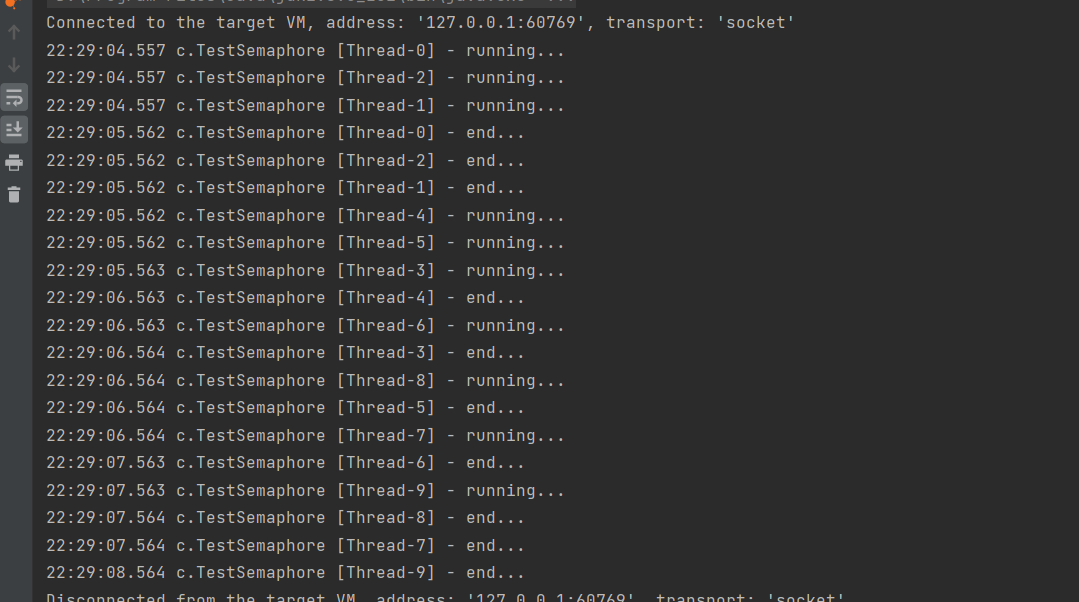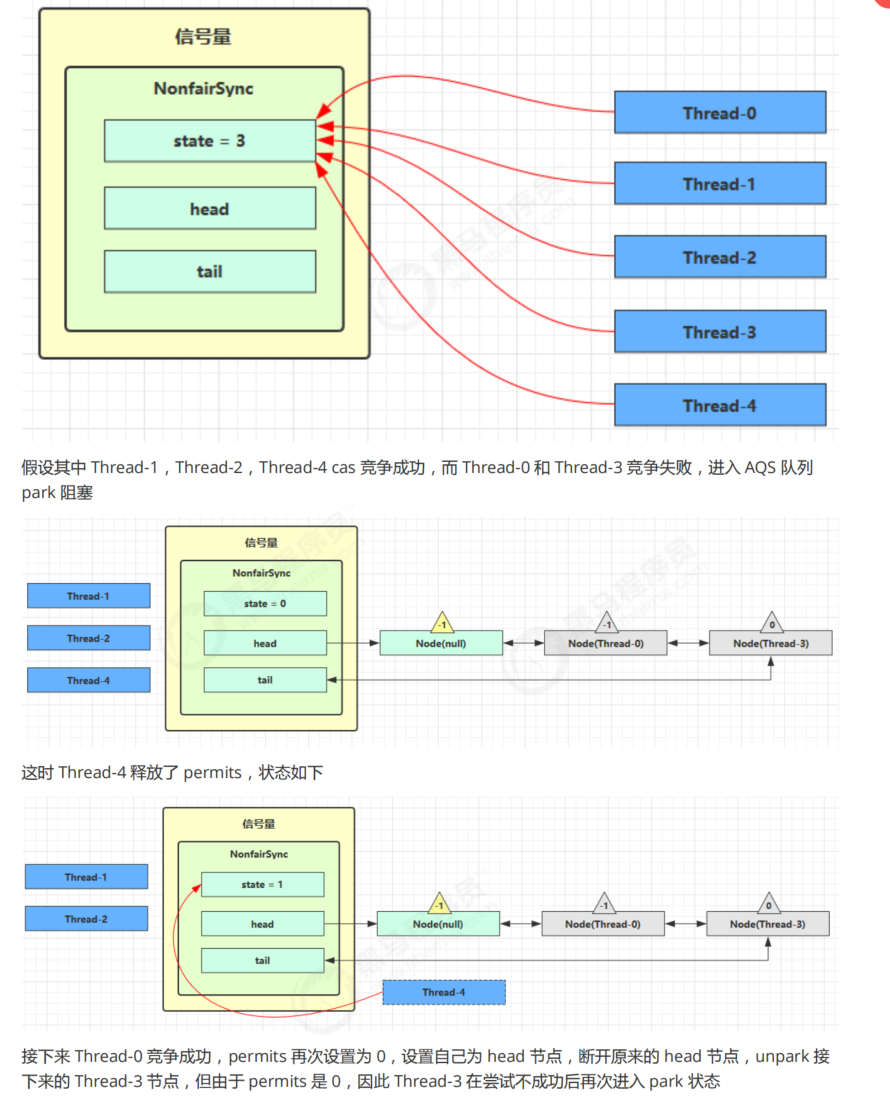目录
- 一、是什么?
- 二、简单使用
- 三、semaphore应用
- 四、Semaphore原理
一、是什么?
Semaphore:信号量,用来限制能同时访问共享资源的线程上限
二、简单使用
public class TestSemaphore {public static void main(String[] args) {// 1. 创建 semaphore 对象Semaphore semaphore = new Semaphore(3);// 2. 10个线程同时运行for (int i = 0; i < 10; i++) {new Thread(() -> {try {semaphore.acquire();} catch (InterruptedException e) {e.printStackTrace();}try {log.debug("running...");sleep(1);log.debug("end...");} finally {semaphore.release();}}).start();}}
}
结果:始终只有三个线程处于正在运行的状态

三、semaphore应用
- 使用semaphore限流,在访问高峰期时,让请求线程阻塞。当然它只适合限制单机线程数量,并且是仅限制线程数,而不是限制资源数(例如连接数)
- 使用Semaphore实现简单连接池,对比享元模式下的实现(用wait和notify),性能和可读性要更好
class Pool {// 1. 连接池大小private final int poolSize;// 2. 连接对象数组private Connection[] connections;// 3. 连接状态数组 0 表示空闲, 1 表示繁忙private AtomicIntegerArray states;private Semaphore semaphore;// 4. 构造方法初始化public Pool(int poolSize) {this.poolSize = poolSize;// 让许可数与资源数一致this.semaphore = new Semaphore(poolSize);this.connections = new Connection[poolSize];this.states = new AtomicIntegerArray(new int[poolSize]);for (int i = 0; i < poolSize; i++) {connections[i] = new MockConnection("连接" + (i+1));}}// 5. 借连接public Connection borrow() {// t1, t2, t3// 获取许可try {semaphore.acquire(); // 没有许可的线程,在此等待} catch (InterruptedException e) {e.printStackTrace();}for (int i = 0; i < poolSize; i++) {// 获取空闲连接if(states.get(i) == 0) {if (states.compareAndSet(i, 0, 1)) {log.debug("borrow {}", connections[i]);return connections[i];}}}// 不会执行到这里return null;}// 6. 归还连接public void free(Connection conn) {for (int i = 0; i < poolSize; i++) {if (connections[i] == conn) {states.set(i, 0);log.debug("free {}", conn);semaphore.release();break;}}}
}
四、Semaphore原理


)
![[NISACTF 2022]popchains - 反序列化+伪协议](http://pic.xiahunao.cn/[NISACTF 2022]popchains - 反序列化+伪协议)










)

)



)
